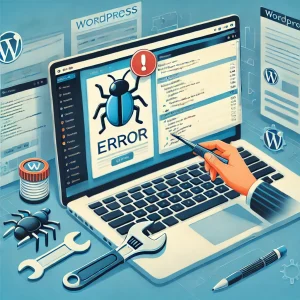WordPress is a powerful platform, but users may occasionally encounter bugs that disrupt their experience. Here’s a step-by-step guide to applying a WordPress bug fix to common issues.
1. Identify the Problem
Before you start troubleshooting, clearly identify the WordPress bug. Is it a layout issue, a plugin malfunction, or a site speed problem? Take note of any error messages to help resolve the issue faster.
2. Update Everything
Ensure that your WordPress core, themes, and plugins are up to date. Updates often include bug fixes and performance improvements that can solve your WordPress bug issues.
3. Check Plugin Conflicts
Plugins can conflict with one another, leading to bugs in WordPress. To check for plugin conflicts:
- Deactivate all plugins.
- Reactivate them one by one to identify the problematic plugin.
- Once you’ve found the cause, update or replace the plugin to apply a WordPress bug fix.
4. Switch to a Default Theme
If you suspect the bug is related to your theme, switch to a default WordPress theme (like Twenty Twenty-One) to check if the issue persists. If the problem is solved, contact the theme developer to get help with the WordPress bug fix.
5. Enable Debugging
If you’re comfortable with code, enable WordPress debugging to uncover error messages and pinpoint the bug:
- Add the following lines to your
wp-config.phpfile:phpdefine('WP_DEBUG', true);
define('WP_DEBUG_LOG', true);
define('WP_DEBUG_DISPLAY', false);
- Check the debug log in the
/wp-content/debug.logfile for specific error details to help with the WordPress fix.
6. Clear Cache
Old cached files can cause bugs to persist even after changes are made. If you’re using a caching plugin or a CDN, clear your cache to ensure your WordPress bug fix is applied.
7. Seek Support
If the bug persists after applying these steps, seek help in the WordPress support forums or consult the documentation for your theme or plugins.
8. Backup Your Site
Before making any significant changes, always create a backup of your site using plugins like UpdraftPlus or BackWPup. This ensures your data is safe while you apply a WordPress bug fix.
Conclusion
A systematic approach can help resolve most WordPress bugs quickly. By following these steps, you’ll be able to troubleshoot and apply an effective WordPress bug fix to keep your site running smoothly.

